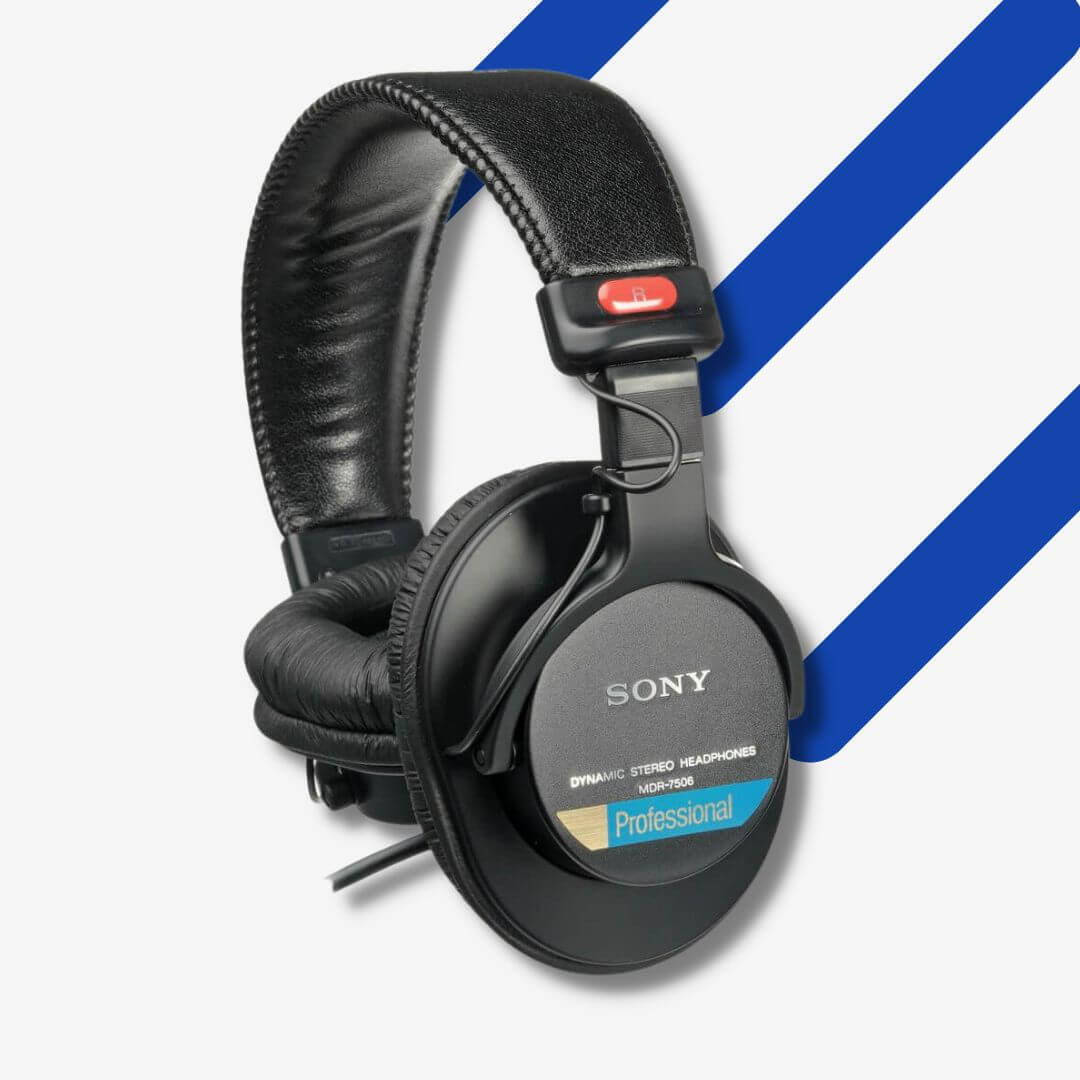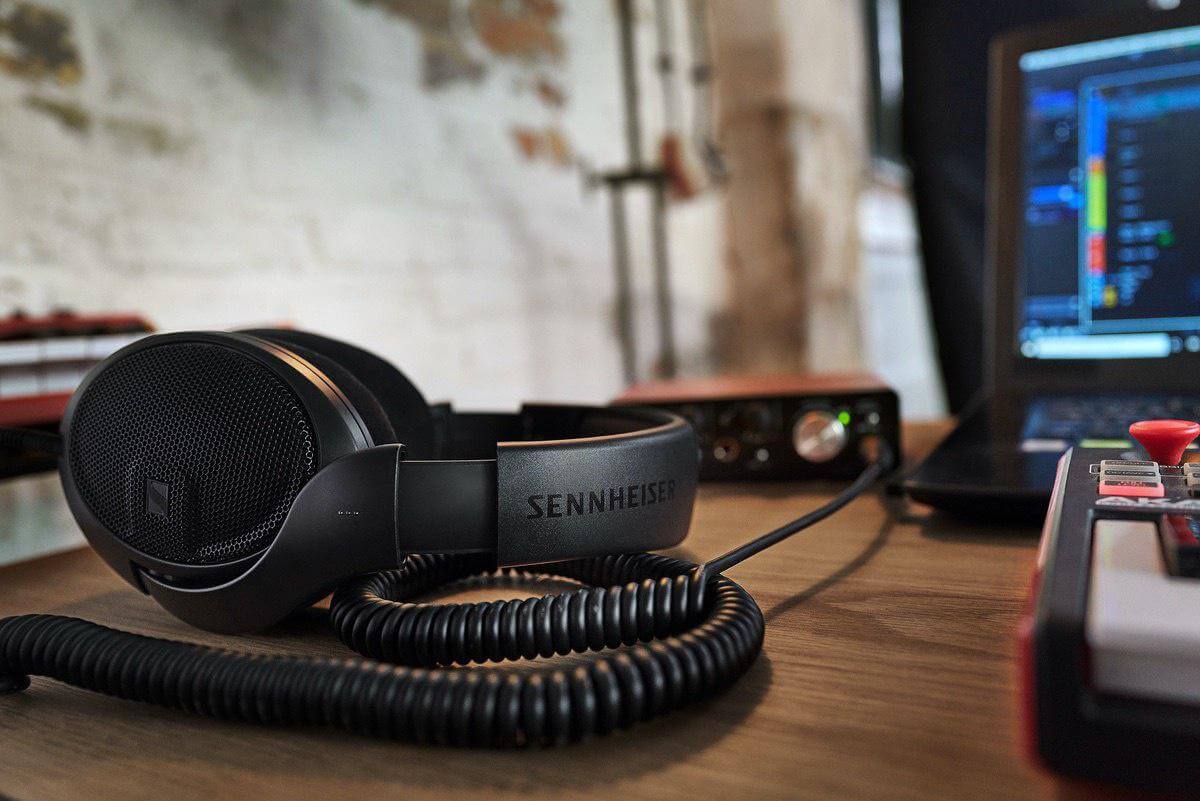5 best headphones for professional music production at home
Image Credit: Forbes
Music production headphones for music production are one of the most necessary bits of music gear, especially for home studios. But what headphones do music producers use?
Producers tend to spend a few hundred dollars on their studio headphones. Of course, you don’t want headphones for music production that will break the bank. But you’ve got to be prepared to spend over $100 if you’re looking for a pair of studio headphones that will serve you well in the long run, with a few exceptions.
Studio headphones offer a transparent, flat reproduction of your music projects. With that said, production headphones are more of a reference tool that acts as an extension for near-field monitors. The bigger drivers in speakers create a bigger sound field and so often give producers a better reproduction. Additionaly, the stereo field is often too wide in headphones because each ear is receiving sound from different drivers.
But studio monitors require a sound acoustic space to sound their best, and not everyone can treat their room to this standard. Therefore relying more on studio headphones presents little sonic details that poorly treated rooms may mask. And that’s why we’re talking about what we think are the best headphones for music-making in home studios – the labs of independent artists and music producers.
And if you’re trying to decide whether to get open-back or closed-back headphones, you need to figure out what purpose your headphones are going to serve. We’ve previously written an article to help you do just that.
1. Beyerdynamic DT 1990 Pro – best open-back headphones for music production

- $516
- Open-back
- Coupling: Circumaural
- Weight: 370g
- Frequency response: 5Hz to 40kHz
- Impedance: 250Ω
Up first, we have a real pair of high-quality headphones for music production. Beyerdynamic headphones such as the DT 770 Pro outshine many competitors at similar price ranges, and the brand is number one in our list of best headphones for music production as a result.
The Beyerdynamic DT 1990 are open-back headphones with a circumaural ear cup design. Therefore they’re great for mixing in a quiet listening environment rather than monitoring performance. However, the DT 1990 Pro headphones are the open-back version of the DT 1770 Pro closed-back cans which will suit monitoring live recordings better.
Nonetheless, the DT 1990 Pro open-back headphones have a strong build that’s been engineered with cutting-edge components. Their design features a lot of metal, for example, such as the earcup forks and open-back driver grills. Consequently, they are more durable than plastic headphones and feel more professional while using too, so don’t expect them to feel light!

Speaking of the driver grills, they have a silver mesh that breaks up the all-black look. And Beyerdynamic made the headband from plush leather which spreads the 370-gram weight of the cans evenly across your head. As for the earpads, they’re made from memory foam and wrapped in grey velour. All in all, the DT 1990 Pros make for a comfortable listening experience, but your ears may get a little warm after a long session as the pad material doesn’t breathe very well.
Coupled with the build of the ear cup, the high-flux neodymium drivers offer a wide frequency response that performs right out of the box with high-accuracy, flat audio reproduction. The soundstage is deep and provides a realistic representation of your music.
As per Beyerdynamic tradition, the DT 1990 Pro headphones do have a high impedance value. Sitting at 250 ohms, you’ll need an amplifier (such as an audio interface) if you want to hear your music at optimal volume levels. Note that these studio headphones will lose their magic without some sort of amplification.
On the left ear cup, you’ll find a single mini-XLR connection. And Beyerdynamic ships the DT 1990 Pro with two cables: a 3-meter straight cable and a 5-meter coiled cable, both with a 3.5mm mini-jack and a 6.35mm screw-on adapter. Additionally, the DT 1990 Pro headphones come with two sets of earpads in the case. Both an “A” version (which features a neutral frequency response) and a “B” version, which gives any bass a slight boost.
2. Sennheiser HD 400 Pro

- $199
- Open-back
- Coupling: Circumaural
- Weight: 240g
- Frequency response: 6 Hz – 38 kHz (-10 dB)
- Impedance: 120Ω
The Sennheiser HD 400 Pro open-back circumaural headphones provide a balanced sound stage and comfort over long sessions. Further, they are well-built despite only weighing in at 240g. And you can adjust the headband and flex the velour-padded ear cups inwards a little to fit the shape of your head too. As a result, they grip your head comfortably and firmly, and won’t cause fatigue over long sessions or overheat your ears.
Sound naturally leaks from their open-back design at higher volumes, so they’re better suited to mixing in quiet spaces compared to live monitors. But the accurate, neutral, and honest reproduction makes these cans mixing weapons!
The 400 Pro headphones come with two detachable cables (3m and 1.8 m) in addition to a 3.5mm to 6.3mm adapter. The 3m cable is coiled while the 1.8m cable is straight and the connection is on the left ear cup.

The drivers emulate the triangular monitor listening position by sitting at slight angles in the cups. And 120 ohms of impedance means these headphones also need a more powerful headphone amplifier that not all audio interfaces provide.
The HD 400 Pro headphones provide a wide frequency response from 6Hz to 38kHz. And even at really high SPLs distortion isn’t really that noticeable – though we don’t recommend driving any headphones with dangerous SPLs.
To summarise, the HD 400 Pro headphones reproduce bass, mid, and treble frequencies accurately with best in class stereo separation. They reveal the layers of a mix clearly, and the frequency response itself is very evenly balanced. Their bass response is solid with plenty of extensions and no overwhelming boominess.
3. Audio-Technica ATH-R70x

- $349
- Open-back
- Audio coupling: Circumaural
- Weight: 210g
- Frequency response: 5Hz – 40kHz
- Impedance: 470Ω
Switching between the Audio-Technica ATH-R70x headphones and well placed studio monitors doesn’t actually present a big jump in reproduction quality. In other words, these are some pretty accurate studio headphones! The biggest difference though is in the high-end where the R70x headphones don’t deliver as much clarity as competitors.
None the less, the R70x headphones are pretty light and comfortable to wear over long sessions. They don’t squish your head like some other Audio-Technica headphones do, and their open-back circumaural design presents a smooth-sounding soundstage with accurate frequency reproduction. There are no noticeable boosts or cuts below the high end, so you can expect to hear plenty of detail!

Unwanted sibilance and messy mix characteristics are easy to find in these cans thanks to their precise frequency response. With that said, the response does roll off a little suddenly between 10-20 kHz, though this won’t cause many issues as these are mostly just “air” frequencies. The bass and low mids are even with the right amount of extension and no hint of boominess.
4. Audio-Technica M70x – best closed-back headphones for music production

- $305
- Closed-back
- Audio coupling: Circumaural
- Weight: 280g
- Frequency response: 5Hz – 40kHz
- Impedance: 35Ω
The M70x is the flagship model within Audio Technica’s M series and it builds on the success of the popular M50 headphones (now M50x).
These closed-back headphones are aimed at a wide range of monitoring purposes. In contrast to the solid build of the Beyerdynamic DT 1990 Pro headphones, the Audio Technica M70x swiveling circumaural ear cup design allows for monitoring and listening in noisy environments in addition to “one-ear-off” usage.
After one listen you’ll notice that these cans are geared towards producing a crisp reproduction of instruments and vocals, but also how they lack some low-end response. This may not be a problem if you’re monitoring a live recording, but it will be for electronic music producers.
Further, the sound isolation qualities of the ear cups compared is fairly poor compared to competitors. But the faux leather earpads are comfy to wear for long sessions and do provide enough isolation for monitoring purposes.
The soundstage of the M70x headphones is pretty impressive for closed-back headphones. None the less, the frequency response produces a stereo image that is a little narrow because of the lack of low-end. In other words, this lack in the low end reduces the central anchoring effect that prominnetn bass provides.
While it may be easy to over-compensate for bass due to the lack of lows, you’ll notice any unwanted distortion due to the crisp reproduction in of upper-harmonics. Despite the gradual roll-off, the high-end reproduction is smooth with no over-presence in the sibilant range too.
5. Sony MDR-7506 – best budget headphones for music production

- $87.99
- Closed-back
- Audio coupling: Circumaural
- Weight: 230g
- Frequency response: 10Hz to 20kHz
- Impedance: 63Ω
The final pair of headphones on our list is the Sony MDR-7506 headphones. They’re closed-back with a circumaural design that just fits over your ears, they’re lightweight and comfortable to wear for long sessions, and their metal extension sliders have useful graded scales that allow you to adjust the headband on either side easily.
Additionaly, you can fold the earcups into the headband for easy transportation. But be wary of the lightweight plastics the cans are made of before just throwing them into your bag! Despite these amazing ergonomic pros, one feature that may be a little off-putting is the cable. It’s attached to both sides of the headband and slides down onto the outside of the ear cup before entering the plastic side casing.
On the smallest headband adjustment, it creates a weird loop of cable that sticks out from both sides of the unit. While not the most fashionable, this would help you if you need to replace the cable at any time. The cable itself is 3 meters long which is handy while recording instruments with a microphone or performing on a MIDI controller – though it will be easy to tangle!
While maybe not so good for electronic music producers, the Sony MDR-7506 headphones accepts their lack of bass and instead focuses on the details in mid and treble ranges. Like the previous headphones, you will notice unwanted artifacts with their revealing soundstage – making them a great reference tool while mixing.
As we mentioned, any lack of bass is made up for in the details these cans provide in higher ranges. However, the bass reproduction is still tight and perfectly audible.
And with only 63 ohms of impedance, you can use these headphones on pretty much any source – including your smartphone.
Final thoughts
Whether you buy studio monitors or music production headphones should be determined by how acoustically treated your room is. Owning both monitors and headphones is ideal, but that can be too expensive for some, and if your room isn’t acoustically sound then monitors won’t deliver a clean sound.
You can determine how acoustically sound your room is with the clap test. Simply clap once in your preferred listening position, in the corners of the room, and in the open space of your room, and if you hear a subtle yet noticeable reverb then your room will offer a decent sound from studio monitors. on the other hand, if you hear a harsh fluttering of sound bouncing between your walls, known as flutter echo, then prioritize music production headphones. Your room will taint any sound leaving studio monitors before it reaches your ears.
